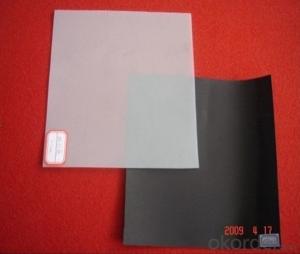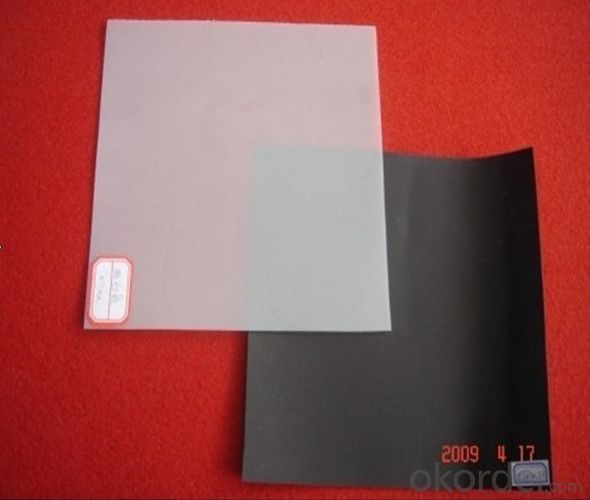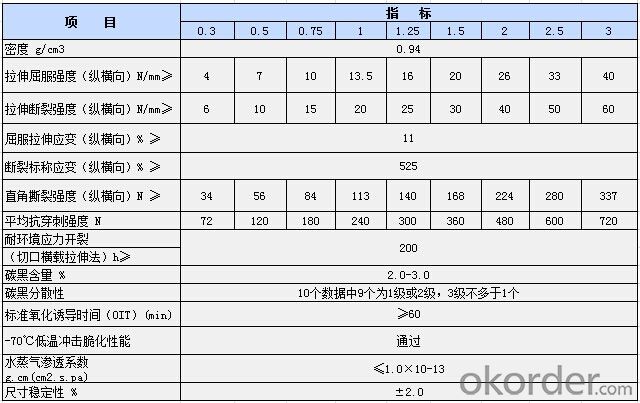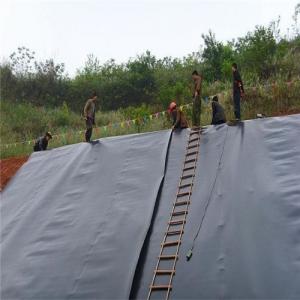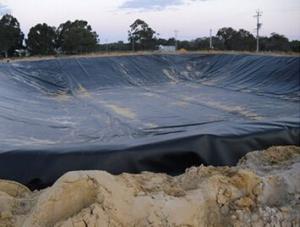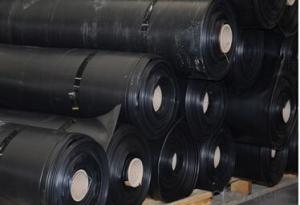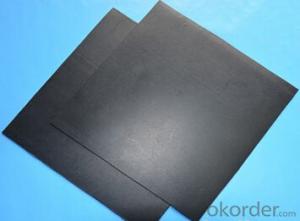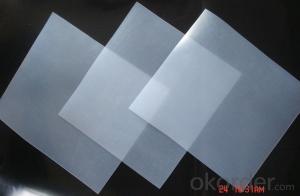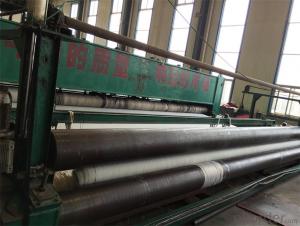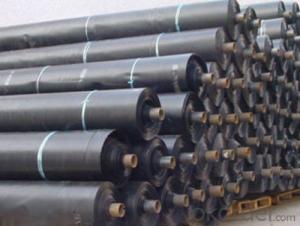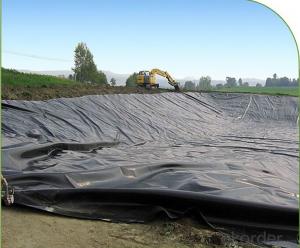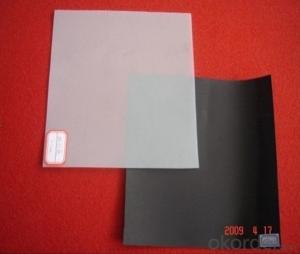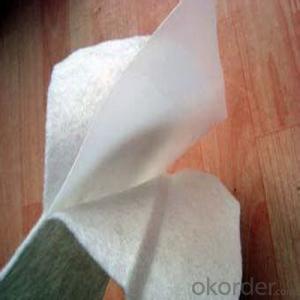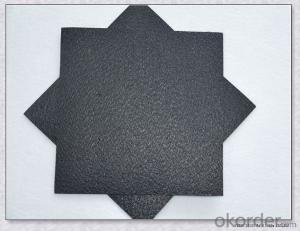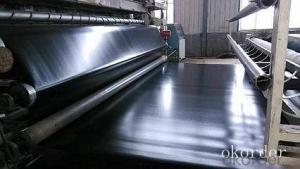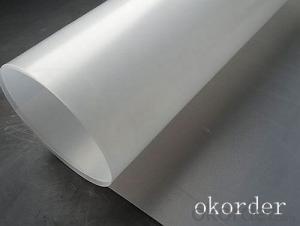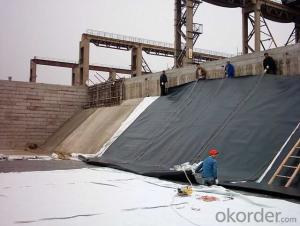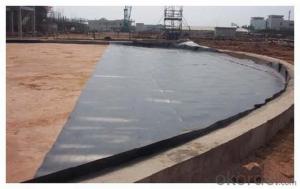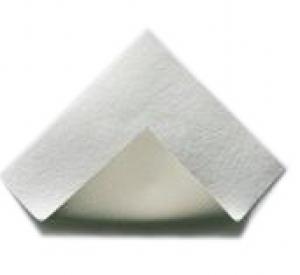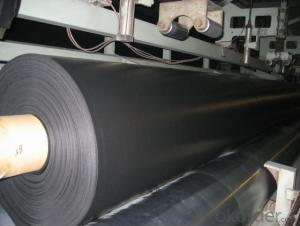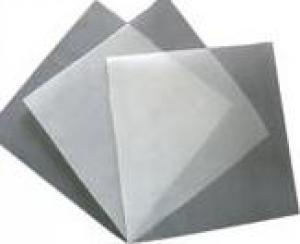Geomembrane Roll - CJ/T234-2006 2.0mm Glossy Green HDPE Geomembrane
- Loading Port:
- China Main Port
- Payment Terms:
- TT or LC
- Min Order Qty:
- -
- Supply Capability:
- -
OKorder Service Pledge
OKorder Financial Service
You Might Also Like
1.Product Description
Our product was proved as high tearing resistance, puncture, aging, ultra-violet radiation, oil and salt, alkali and corrosion resistance, high
and low temperature resistance, non-toxicity, long operational life, good waterproof, drainage, anti-seepage and damp proof effects
1.used in landfill caps
2.secondary containment for above ground tank farms,
3.as well as within various other containment structures such as dams, canals, ponds, rivers and lakes
4.They are also used for waterproofing of buildings and other similar structures.
2.Product Characteristic:
1), Water (such as rivers, lakes and reservoirs of the anti-dam, plugging, reinforcement of the canal seepage, the vertical wall of the heart, slope protection, etc.).
2), Municipal Engineering (subway, on the ground floor of the building, planted roof, the roof garden of anti-seepage, sewage pipes lining, etc.).
3), Petrochemical (chemical plants, oil refineries, gas storage tanks of the anti-chemical reaction tanks, sedimentation tanks of the lining, etc.).
4), Mining (washing and pool heap leaching, the ash-field, dissolved, precipitation, the yard, the tailings seepage substrates, etc.)
3.Product Specifications:
1.Thickness : 0.1--2.0mm,
2.Length: 50 m -100 m ; width: 4 m -8 m ( according to customer needs )
3.Elongation at break:700%
3.Material: HDPE.
4.Color: Black or as required
4.Reference Picture

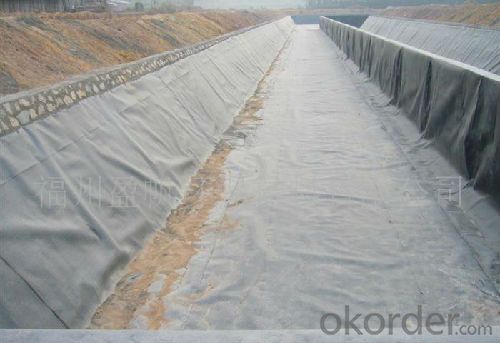
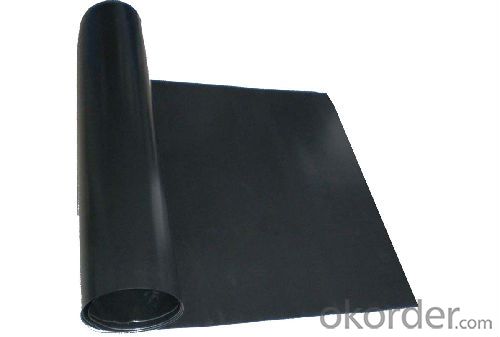
- Q: How do geomembranes prevent seepage in landfills?
- Geomembranes prevent seepage in landfills by creating a barrier that is impermeable to liquids and gases. This barrier, made of synthetic materials like HDPE or PVC, is installed as a lining system on the bottom and sides of the landfill. It effectively prevents the leachate, which is the liquid generated from waste decomposition, from infiltrating the surrounding soil and groundwater. Additionally, geomembranes also help in containing potentially harmful gases, such as methane, that are produced by the landfill, thus minimizing the risk of air pollution.
- Q: How do geomembranes prevent soil erosion in stormwater management?
- Geomembranes prevent soil erosion in stormwater management by acting as a barrier between the soil and the flowing water. These impermeable membranes are installed on the surface of the soil to prevent water from seeping into the ground. By reducing the water infiltration, geomembranes help maintain the stability of the soil and prevent erosion caused by heavy rainfall or stormwater runoff.
- Q: How to purchase geomembrane?
- The choice of composite geo-membrane norms and lower cushion?ply flatness, material allowable tensile stresses, material elastic modulus, the largest head within paving range and largest particle of covering layer. it's thickness design should consider hydraulic?pressure strength reqiurements, and the exposing, embeding, climate, service life and other application conditions, design thickness and actual thickness should be confirmed according to the issued relative standard.
- Q: What national standard does geomembrane material conform to? ?
- National standard: GB/T17643-2008
- Q: Can geomembranes be used in contaminated site remediation?
- Yes, geomembranes can be used in contaminated site remediation. They are often used as barriers to prevent the migration of contaminants, such as oil, chemicals, or radioactive materials, into surrounding soil or water sources. Geomembranes are impermeable liners that can be installed to isolate and contain the contaminated materials, providing a protective layer and preventing further spread of the pollutants. Additionally, geomembranes can also be used in conjunction with other remediation techniques, such as soil vapor extraction or bioremediation, to enhance their effectiveness in cleaning up contaminated sites.
- Q: What are the design considerations for geomembranes in containment systems?
- The design considerations for geomembranes in containment systems include factors such as the type and quality of the geomembrane material, its thickness and strength, installation techniques, compatibility with surrounding materials, resistance to chemical and biological degradation, long-term durability, and proper slope and anchorage. Additionally, factors like temperature variations, UV exposure, and potential stressors like punctures or tears should be taken into account during the design process. Overall, the design should ensure effective containment, minimize environmental impact, and meet regulatory requirements.
- Q: What are the differences between reflective paint and reflective membranes?
- The reflection coefficient of reflective paint is relatively low, while the reflective membrane is capsule type which can last for a long time.
- Q: What if there is water during construction of geomembrane?
- The main role of geomembrane on the road is water insulation, the part higher than the underground water level is isolated by geomembrane, and then backfill and grind, preventing the water through soil capillarity from soaking roadbed filler.
- Q: How do geomembranes contribute to the preservation of wildlife habitats?
- Geomembranes play a crucial role in the preservation of wildlife habitats by providing a protective barrier that helps prevent contamination and degradation of the surrounding environment. These impermeable liners are used in various applications, such as landfills, water containment, and wastewater treatment systems, to prevent the seepage of pollutants into the soil and water bodies. By effectively containing hazardous substances and preventing them from leaking into the habitat, geomembranes help maintain the ecological balance necessary for the survival of wildlife species. Additionally, these liners also aid in the restoration and rehabilitation of damaged habitats, ensuring the long-term preservation of wildlife.
- Q: Can geomembranes be used in sewage treatment plants?
- Yes, geomembranes can be used in sewage treatment plants. They are often employed as liners for containment ponds, lagoons, and wastewater treatment basins to prevent leakage and protect the surrounding environment from contamination. Geomembranes offer excellent chemical resistance, durability, and impermeability, making them suitable for various applications within sewage treatment plants.
Send your message to us
Geomembrane Roll - CJ/T234-2006 2.0mm Glossy Green HDPE Geomembrane
- Loading Port:
- China Main Port
- Payment Terms:
- TT or LC
- Min Order Qty:
- -
- Supply Capability:
- -
OKorder Service Pledge
OKorder Financial Service
Similar products
Hot products
Hot Searches
Related keywords
